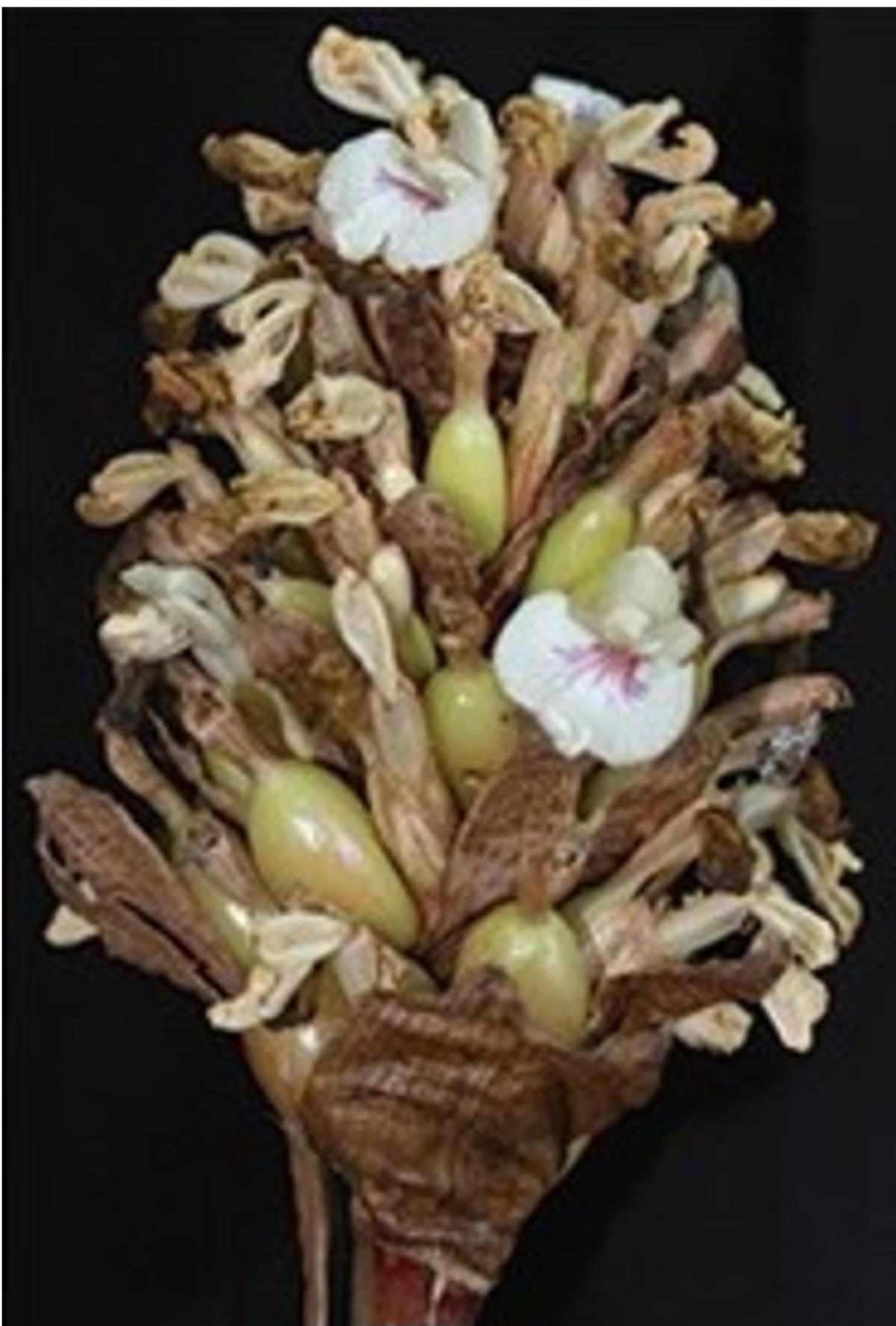
Elettaria tulipifera
| Photo Credit: Special Arrangement
Mention spices and invariably the first thing that springs to mind is the supremely aromatic, flavour-rich cardamom. But it now appears that the ‘Queen of Spices’ has several close, wild relatives and it is not the lone species of the genus Elettaria as previously thought.
An international team of researchers have identified six species that are close cousins to Elettaria cardamomum, better known as green cardamom. Of the six, four were previously placed in a separate genus, Alpinia, while the remaining two have been newly identified and described from Kerala’s Western Ghats regions.
The findings have been published in a paper ‘The cardamom conundrum resolved: Recircumscription and placement of Elettaria in the only pantropically distributed ginger lineage,’ published in the journal Taxon. The international seven-member team from Denmark, India, Colombia, Czech Republic, Singapore, Sri Lanka, and the U.K. included Mamiyil Sabu of the KSCSTE-Malabar Botanical Garden and Institute for Plant Sciences, Kozhikode.
Seven in all
Following the reclassification, the genus Elettaria now has seven species, including Elettaria cardamomum. E. ensal, E. floribunda, E. involucrata and E. rufescens were earlier placed in the genus Alpinia. The remaining two are new species, Elettaria facifera and Elettaria tulipifera, the former described from Kerala’s Periyar Tiger Reserve in Idukki district and the latter from the Agasthyamalai hills in Thiruvananthapuram district and Munnar in Idukki by Dr. Sabu and Jana Leong-Skornickova of the Herbarium, Singapore Botanic Gardens.

Elettaria facifera
| Photo Credit:
Special arrangement
These recent developments which highlight potentially overlooked genetic resources could play an important role in spice production in the future, Dr. Sabu said. The paper notes that after saffron and vanilla, green cardamom is the most valuable spice plant in the world and of huge economic importance.
Seed capsules of Elettaria cardamomum provide the commercial green cardamom.
The genus name is based on this spice’s old Malayalam name, ‘elletari,’ as used by Hendrik van Rheede in his 17th century botanical treatise Hortus Malabaricus. “As Elettaria cardamomum is one of the three most economically important useful species in the (ginger) family, the realisation that the genus now harbours more species may spur future studies into a more detailed understanding of their potential uses and morphological variation than we can provide in the present study,” the research paper notes.
Of the two new species from Kerala, Elettaria facifera is distinguished by sessile leaves, erect flowering shoots that are separate from the leafy shoots, and pure white labellum with purple-red markings. Dr. Sabu notes that the Mannan tribe refer to it as the ‘Vai noki elam,’ (loosely, Open-mouth cardamom) due to the fruit’s resemblance to an open mouth. Elettaria tulipifera has strikingly beautiful tulip-shaped inflorescence and large, bright to dark red, whorled bracts.
Need for conservation
The researchers have underlined the need for conservation efforts as both species face threats arising from natural sources and human activity.
The other five authors of the Taxon paper are Axel Dalberg Poulsen and Mark Hughes of the Royal Botanic Garden Edinburgh; Tomas Fer of Charles University, Czech Republic; Lakmini Darshika Kumarage Marasinghe of The Open University of Sri Lanka; and Eugenio Valderrama of Fundación Humedales, Bogota, Colombia.
Published – February 02, 2025 08:16 pm IST
